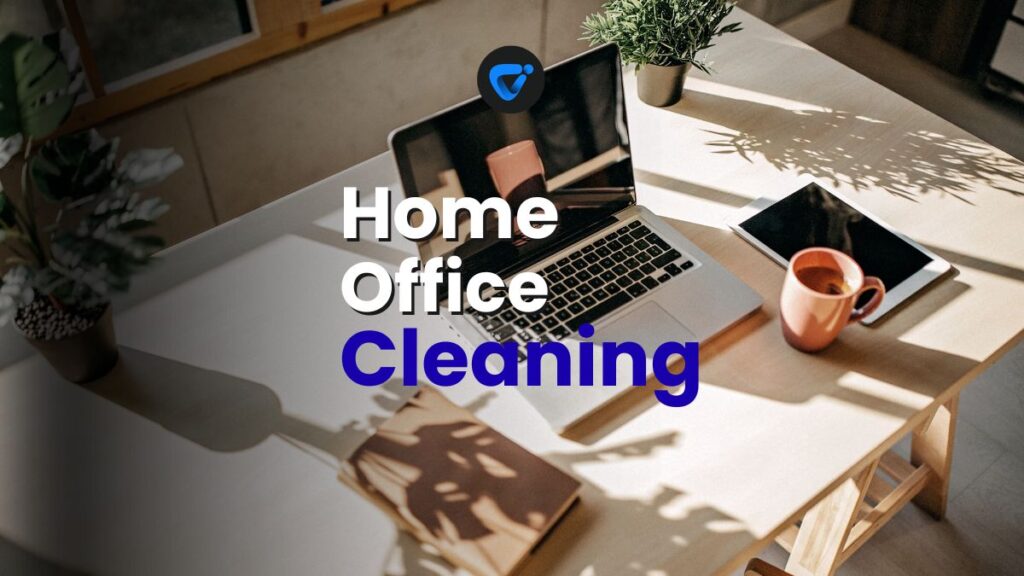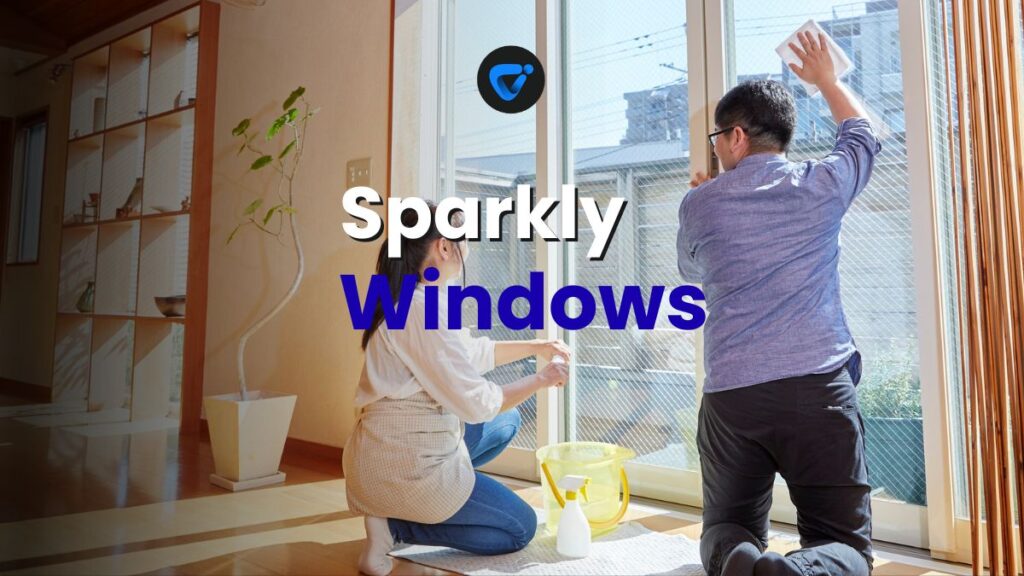
Sunlight hits your keyboard and suddenly every speck of dust stands out. That layer, almost invisible yesterday, creeps across screens and cables. In a world filled with electronics, dust management means more than swiping a cloth now and then.

Quick Daily Bedroom Reset in Under 15 Minutes
Transform your space fast! Follow this 15-minute daily bedroom reset to keep things tidy, calm, and clutter-free.
Modern devices pull in dust from every direction. They hide it in vents, nestle it under keys, and settle it behind screens. Ignoring these dust nests shortens gadget lifespans and can even spark real headaches as you work.
Let’s pull back the mouse pad, lift some screens, and see what daily dust management in your home office really looks like. Scroll through practical micro-guides, step sequences, and realistic hacks tailored to keep tech clean and reliable.
Define a Clean Zone Around Your Desk
Building a boundary between your workspace and household chaos stops dust from sneaking onto your electronics. Make it clear where daily dust management starts and ends.
Commit to this strategy: create a dedicated work surface—and treat every inch as “no-dust territory.” Sweep floors, wipe surfaces, and limit clutter in the zone where you use electronics most.
Seal Off Sneaky Dust Pathways
Door gaps and open windows invite in dust from vents and shoes. Tackling these routes with draft stoppers and window seals blocks the main dust highways before debris lands on your devices.
Apply padding under doors. Install simple adhesive strips to window frames. After that, run your hand along the edges; if you feel air, seal it further. Fewer air leaks mean less dust grabbing hold.
Shoes off and doormats down, family members or visitors will remember where to stop. Even tiny changes prevent new dust from crossing the home office boundary day after day.
Organize Power Cords and Accessories
Bunched-up cables and exposed printer trays collect dust like magnets. When cords rest on the floor or pile behind monitors, air currents drop lint and debris right where you least want it.
Untangle all wires and group them with cable ties. If possible, elevate power strips or use wall-mount brackets. Each cord bundled neatly is one less surface for dust to claim.
Printer covers or stackable trays keep paper dust where it belongs. Run a microfiber cloth between spacer bars, and declare that area part of your dust-managed zone.
| Home Office Feature | Dust Risk | Prevention Strategy | Takeaway |
|---|---|---|---|
| Flooring (Carpet) | Traps dust and allergens | Vacuum weekly, use mats | Carpet adds frequent dust need, manage daily |
| Window Sills | Collect airborne dust | Seal and wipe weekly | Monitor after storms; keep clutter off sills |
| Keyboard & Mouse | Dust in cracks, under keys | Use compressed air, wipe with cloths | Set reminders for monthly deep clean |
| Monitor Screens | Surface static draws dust | Microfiber only, no paper wipes | Clean when sunlight reveals smudges |
| Speaker Grills | Dust blocks sound holes | Brush or vacuum low setting | Test clarity after each cleaning |
Routine Dust Management Habits for Reliable Tech
Your tech stays dependable with regular dust management steps built into daily and weekly routines. These micro-habits save you repairs and time troubleshooting later.
Choose and stick to two dust-fighting actions every workday—like wiping screens and sweeping key areas. These simple routines make your office look sharper and extend device performance.
Daily Essentials: Keep Surfaces Ready for Work
Grab a microfiber cloth before you log off each day. Start with the desk, move to your keyboard, then sweep your mouse. What matters is tiny, consistent acts—even 30 seconds will show results.
- Wipe the desk surface before setting down coffee or snacks, keeping residue and crumbs away from cables.
- Run the cloth over your mouse and keyboard. Use gentle motions to dislodge debris and prevent buildup around keys.
- Use a handheld duster on your chair arms and seat, since fabric or mesh can harbor lint that migrates to devices.
- Check under monitors: brush away dust hiding at the base where air moves but often gets ignored.
- For visible power strips or chargers, remove dust using a soft brush so nothing interrupts the charging process.
Getting into this habit right before you close your laptop or power down your PC solidifies the office as a low-dust zone.
Weekly Deep Dives: Address Hidden Spots
Sunday mornings, say: “Alexa, remind me to clean keyboards and vents.” Dive deeper by flipping your keyboard and gently tapping it. Use compressed air on desktop fans or laptop exhausts.
- Turn off and unplug all electronics before cleaning to avoid static shock and electrical hazards. Safety makes every step more effective and risk-free.
- Wipe behind monitors, not just the screens, since cables and stands trap unexpected dust.
- Clean fan grilles and vent openings using a small brush. It encourages steady airflow and cuts down on motor noise from blocked fans.
- Empty printer trays and shake out the dust. Then wipe rollers and photo sensors with a slightly damp microfiber cloth for crisp prints.
- Use vacuum attachments on carpet edges—your computer’s feet catch migrating lint even with a clean visible floor.
These deep cleanings, paired with daily touch-ups, deliver long-term dust management that pays off in reliable tech.
Choose the Right Tools for Every Tech Surface
Each home office tool needs a matching dust management weapon. Choose the right one—no paper towels or random t-shirts—so every surface gets the care it deserves and nothing suffers scratches.
A basic starter kit should fit in your drawer: two lint-free microfiber cloths, canned or electric air, and basic dusting brushes dedicated to your electronics.
Microfiber Cloths: Safe on Screens and Plastics
Microfiber cloths offer static control and gentle cleaning for touchscreens, monitors, and device backs. Their split fibers attract dust without leaving streaks. Use one color for dry dusting, another for occasional damp cleaning.
Fold into quarters—never ball it up—so each pass uses a fresh segment. Swap your cloth once a week, toss in the wash cold, and air dry. Rotating cloths keeps cleaning efficient and germ-free.
If you spot streaks or residue, either switch to a clean piece or moisten slightly. Don’t add soaps or vinegar: residue can damage coatings under bright light or constant use.
Compressed Air and Brushes: Under the Keys and in Tight Corners
Use compressed air in short, controlled bursts. Tip the keyboard or device sideways to let dust fall out—not back in. A small, soft brush sweeps dust from seams and corners after air lifts it free.
For laptops, slide the brush between cooling fins or USB ports. These crevices collect more than you’d expect. Avoid metal brushes (they scratch) and don’t over-blow—gentle is good enough.
If your device hums or runs hot, schedule a compressed-air cleaning monthly. That keeps performance steady without fans struggling against invisible yet stubborn dust layers.
Personal Habits That Cut Down Tech Dust
Changing your own behaviors—eating at your desk, shaking out bags, leaving windows open—changes the dust management challenge. Each personal habit shapes the dust deposited on your office tech.
Decide which comforts are worth a little added cleaning. Set boundaries for food, bags, or opened windows. If you occasionally break these rules, just address the dust right after.
Replace High-Dust Behaviors with Cleaner Habits
Swap hand-to-face gestures and snacks with designated snack breaks away from electronics. This rule blocks crumbs and oils before they settle between keys or inside ports.
On phone calls or virtual meetings, rest hands on your lap rather than the desktop. Fewer fidgets mean areas around your laptop stay cleaner, and any collected particles leave with you, not your electronics.
At the end of the day, tidy the space even if you don’t spot new dust. Routine matters as much as visible dirt—removing what you can’t see keeps surprise tech malfunctions at bay.
Keep Pets and Plants in Their Place
Pets love to snooze under desks but leave hair and dander behind. Try building a barrier or closing the door at work hours. Review their resting spots for dust trails twice a week.
For plants, keep them elevated or a short distance from devices. Water carefully to avoid spills, and prune leaves to reduce airborne dirt. Choose broadleaf varieties—they shed less and need less dusting than fuzzy or flowering options.
Implement a short script: “Door closed, pets patted, space cleared,” as you start and leave your office. It keeps personal comforts without sacrificing your dust management streak.
Best Micro-Guides for Maintaining Top Tech Health
Following exact micro-guides is reliable dust management. They help you prevent failures, troubleshoot weird noises, and spot patterns between cleaning and gadget behavior in minutes each week.
For every device, there’s a routine that makes it last longer and work better. Stick micro-guides on your wall or inside your desk for instant reminders. Here are a few you’ll want to try today:
Laptop and Desktop Fans: Regular Gentle Cleaning
Once a month, unplug your laptop or desktop before turning it upside-down. Use short bursts of compressed air across fan grills or vents. Repeat for all accessible intake areas to clear micro-dust and maintain steady airflow.
Check sound and temperature after each cleaning. If fans are quieter and surfaces cooler, your dust management strategy just improved device health overnight.
If you notice no improvement, consider removing the panel or consulting a repair professional for deep dust removal every few months—but begin every month with the easy-first method here.
Monitor and Touchscreen Maintenance: Fast, Streak-Free Routines
Use a clean, dry microfiber to wipe screens every three days. For stubborn smudges, dampen the cloth slightly with water—never with chemical sprays.
Always clean in circles, working from center outward. This reduces static buildup on the edges, which triggers faster dust accumulation. If glare remains, try cleaning with screens powered off and shades drawn to spot true streaks.
Once a month, inspect screen corners, cable holes, and stands for dust rings. A soft brush here prevents specks from migrating across your display the next busy week.
Quick Wins That Make Dust Management Stick
Seeing fast results helps you stick to dust management changes. Tackle tiny pain points first, and your energy for larger jobs grows naturally. Revisit these quick wins when motivation dips.
Set a timer for five minutes after each workday—what can you dust or organize in that window? Even a lightning sweep across the mouse or unplugged power strip delivers a greater sense of calm and control.
- Keep a duster in your drawer—use it while waiting for video calls to start. Little moments add up over weeks and months.
- Install a small air purifier at your feet or desk corner. It cuts the airborne dust load by collecting particles before they settle on delicate gear.
- Put a sticky note on your monitor weekly: “Dust check.” Simple reminders prompt you to glance at hotspots and fix them fast.
- Store microfiber cloths in plain sight, so grabbing one becomes a frictionless part of ending your work session.
- Break up deep-clean jobs among housemates or family with assigned areas. Division makes the office dust management task less overwhelming and quicker to complete.
Every micro-success leads to a more efficient workspace and longer-lasting devices, building real confidence in your office environment over time.
Reflect and Refine Your Approach to Office Dust
Maintaining clean tech is a journey, not a once-off effort. Each day’s routine and every new dust management tactic helps you learn what works best for your exact setup.
Tech evolves, and so do home office landscapes. As new devices arrive or work habits shift, pause to refine your approach. Tweak routines and refresh tools to meet changing dust patterns head-on.
Think of each cleaned key or dusted port as small insurance against future tech troubles. With the right habits, your electronics and energy stay strong—no matter what dust the week brings.
Frequently Asked Questions
Turn off and unplug the tower, then open the case. Use short bursts of compressed air—never vacuum or wet wipes. Always discharge static electricity by touching metal before cleaning.
Yes, especially when placed near your workspace’s main airflow path. A HEPA-filter air purifier can reduce airborne particles by 30–50 percent, lowering the dust settling on electronics each week.
Wipe keys daily, use compressed air weekly, and do a deep clean monthly. Food debris accelerates dust buildup, which damages mechanisms and can affect typing comfort if left too long.
Never spray glass or surface cleaners directly on electronics. Use a dry or lightly-dampened microfiber cloth for most screens and plastics. Avoid ammonia and vinegar; these ingredients can strip coatings or leave streaks.
You’ll notice louder fans, higher device temperatures, visible dust trails, and new static issues. Set reminders to check and adjust routines monthly, especially as new gadgets or pets enter your home office.

Pantry Organization and Deep-Clean Checklist
Transform your kitchen fast! Follow our pantry organization and deep-clean checklist for a fresh, clutter-free space.


